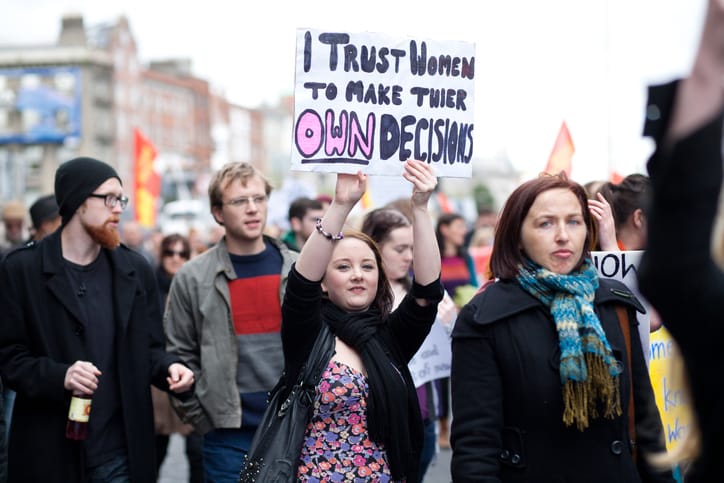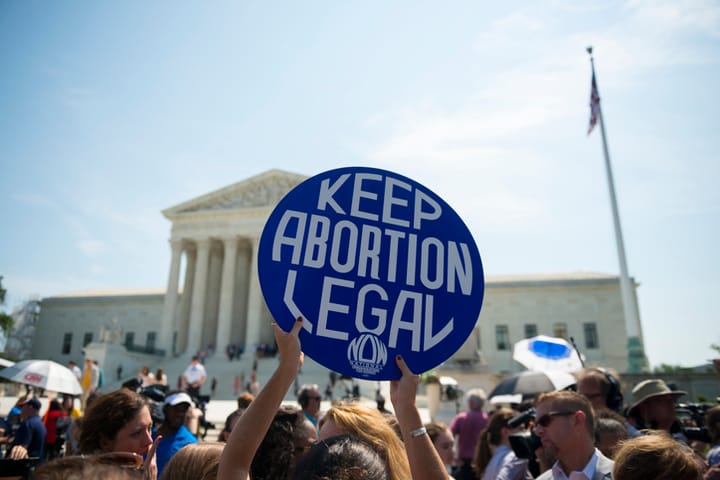Despite what you may think based on the current news cycle, reproductive rights extend beyond access to abortion. They cover issues that affect everyone, not just women, and they are vital to a productive and fair society. Here’s what they are and why everyone should care about them.
- Access to accurate information The first step to reproductive justice is education. Unless people know what their risks and options are, they will not be able to make informed choices. Sex education is one of the key reproductive rights. Unfortunately, it is lacking in many parts of the world, with deadly consequences. Human Rights Watch issued a report that used Alabama as an example. It found that the lack of accurate reproductive education not only led to a high rate of unwanted pregnancy in the state, but also to cancers caused by STDs, and high instances of infant and maternal mortality. According to the report, accurate sex education in schools is necessary for young people to “build healthy relationships and make informed and safe decisions.”
- Choice when and whether to marry Forced marriage is still a common practice globally and overwhelmingly affects girls and women. According to UNICEF, 650 million women alive today were married as children. Child marriage often damages the victim’s prospects due to early pregnancy, social isolation, a premature end to schooling, and the prevention of career aspirations. While many may consider this to be a “foreign” problem, it happens in the U.S. as well. According to a 2018 study from researchers at UCLA, 78,400 American children have been married. Researchers attribute this to legal loopholes allowing predatory adults to take advantage of vulnerable children. Some states do not even have a minimum age for marriage as long as there is parental consent. This may not seem like it should be included with reproductive rights, but it totally is.
- Access to adequate healthcare When it comes to reproductive rights, “access” doesn’t just mean that there is a hospital nearby. It means the availability of quality healthcare that is affordable, physically proximate, and free from discrimination. Having to go into debt to give birth or travel hundreds of miles to have an abortion are examples of violations of these reproductive rights. It is estimated that if the Supreme Court were to follow through with its plan to overturn women’s right to abortion, 24 million women would have to travel more than 150 miles to get the healthcare that they are entitled to.
- Access to contraception Birth control is the best way to prevent unwanted pregnancy (besides abstinence) and it saves women from having to seek abortions or carry unwanted pregnancies to term. It’s also one of the reproductive rights that’s severely in danger. The World Health Organization estimates that contraception prevented 308 unintended pregnancies in 2017, even though 214 million women worldwide who do not want to get pregnant still do not have access to modern birth control. While some states in the U.S. choose to teach abstinence as the only form of contraception, studies have shown that this does not reduce sexual activity in teens and therefore puts them at higher risk of STDs and unwanted pregnancy.
What else do reproductive rights encompass?
- Freedom from forced pregnancy This is perhaps one of the most vital reproductive rights and certainly the one people think of first. Access to abortion is a hot-button issue in the U.S., but global data is clear: people will terminate unwanted pregnancies regardless of whether abortion is legal. According to the World Health Organization, 45% of all abortions performed between 2010 and 2014 were unsafe, while more than 7 million women were hospitalized as a result of unsafe abortions. There are consequences for forced pregnancies that are carried to term as well: Overwhelming evidence links the legalization of abortion in America in the 1970s to the steady reduction in crime in the decades since. This is because children who are born to parents who are unequipped to care for them have a much higher incidence of criminal activity. According to researchers, the legalization of abortion is responsible for a 47% reduction in violent crime and a 33% reduction in property crime. Clearly, access to abortion is one of the reproductive rights that benefits all of society.
- Choice of when to have children and how many to have Family planning goes beyond the right to not have children. Women who want children have the right to decide when and how many to have. It’s literally one of the most basic reproductive rights we have. This right is so important on a societal level that the CDC labeled it as one of the 10 greatest public health achievements of the 21st century. Being able to choose when and how many children to have has led to better health and economic outcomes, as well as decreased rates of infant and child mortality. Family planning is also necessary for many women who wish to maintain their professional lives after giving birth.
- Freedom from forced sterilization The U.S. has a dark history of forced sterilizations, including a 1927 Supreme Court ruling that led to approximately 70,000 of them being performed on people who were deemed “unfit to procreate.” But this is yet another of our reproductive rights that is not relegated to the past. In recent years, the U.S. government has been accused of forcibly sterilizing detainees at the border, while a 2021 report found that the practice is legal in 31 states. There are even instances in the celebrity world, such as the revelation that Britney Spears’s father (as her legal conservator) forced her to have an IUD despite her wish to have more children. Outside the U.S., the issue continues to be widespread, with instances found on almost every continent.
- Freedom from sexual violence Sexual violence encompasses more than just rape. It includes intimate partner violence, non-partner sexual violence, sex trafficking, forced marriage, and female genital mutilation. While women and transgender people are overwhelmingly the victims (approximately 30% of women globally have been the victims of sexual violence while 47% of transgender people are assaulted in their lifetimes), men are also targets, though the rate of occurrence is harder to determine. Sexual violence not only impacts the physical and mental health of survivors, but also the global economy. The CDC estimates that the financial cost of sexual violence in the U.S. alone surpasses $3 trillion. This is yet another example that reproductive rights are about so much more than just abortion.




